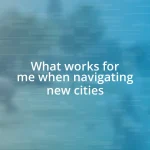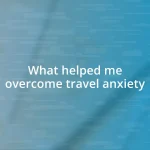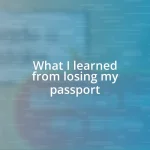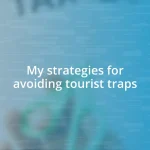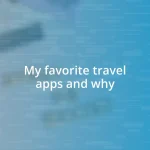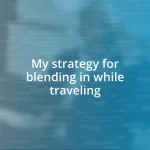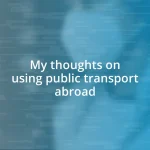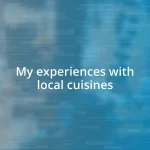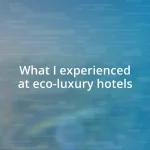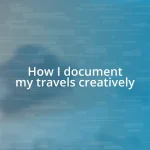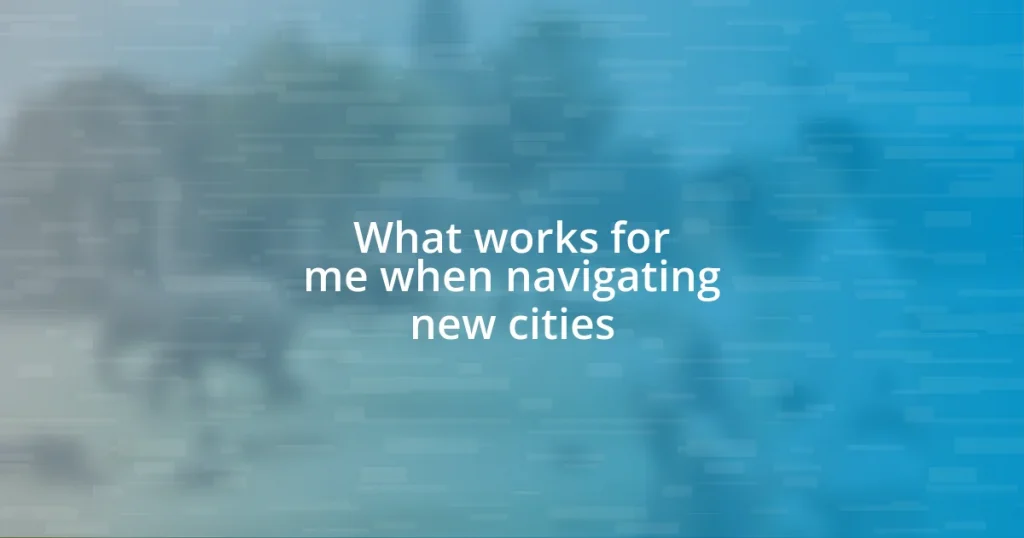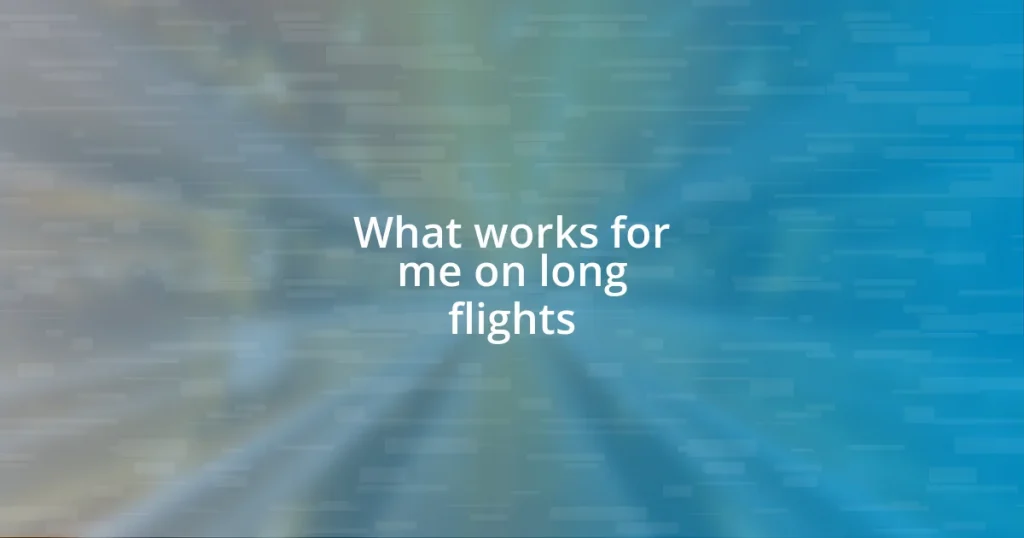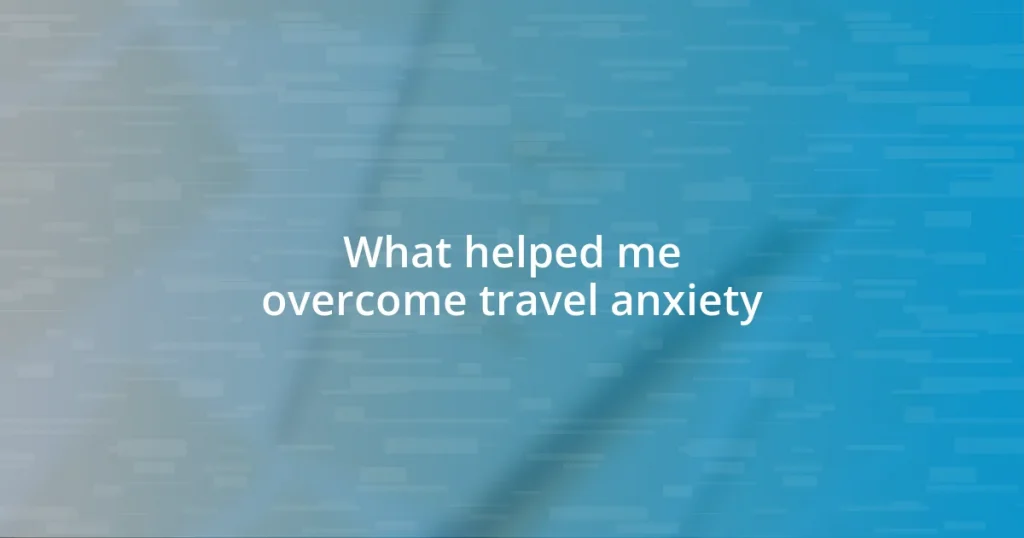Key takeaways:
- Understanding language barriers involves recognizing cultural nuances and the importance of emotional expression in communication.
- Utilizing technology, such as translation apps and online resources, can significantly enhance interactions across language differences.
- Maintaining a positive mindset fosters resilience and encourages connections, transforming potential frustrations into enjoyable experiences.
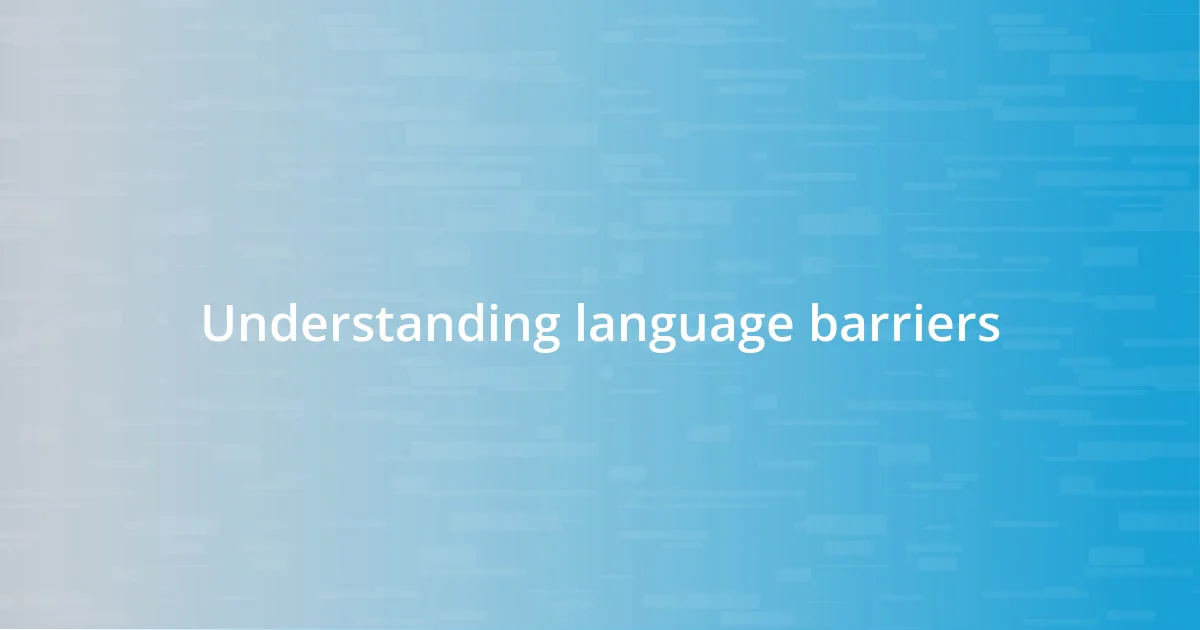
Understanding language barriers
Language barriers can often feel like invisible walls that separate us from deeper connections with others. I remember sitting in a bustling café in Paris, overwhelmed by the rapid French conversations swirling around me. I couldn’t help but wonder: how many stories went unheard because of this simple yet profound gap in communication?
Understanding language barriers is not just about different words and phrases; it’s about cultural nuances and emotions tied to language. For instance, when I attempted to convey gratitude in Spanish, I discovered that simply saying “gracias” didn’t capture my heartfelt appreciation. The way I expressed it—adding warmth and enthusiasm—made a world of difference in how my intent was perceived.
Have you ever felt a deep sense of frustration when you couldn’t express yourself in a foreign language? I certainly have. I found that taking a moment to smile, use gestures, or even draw pictures helped bridge that gap. It reminded me that language is just one way to connect; our shared humanity often speaks louder than words.
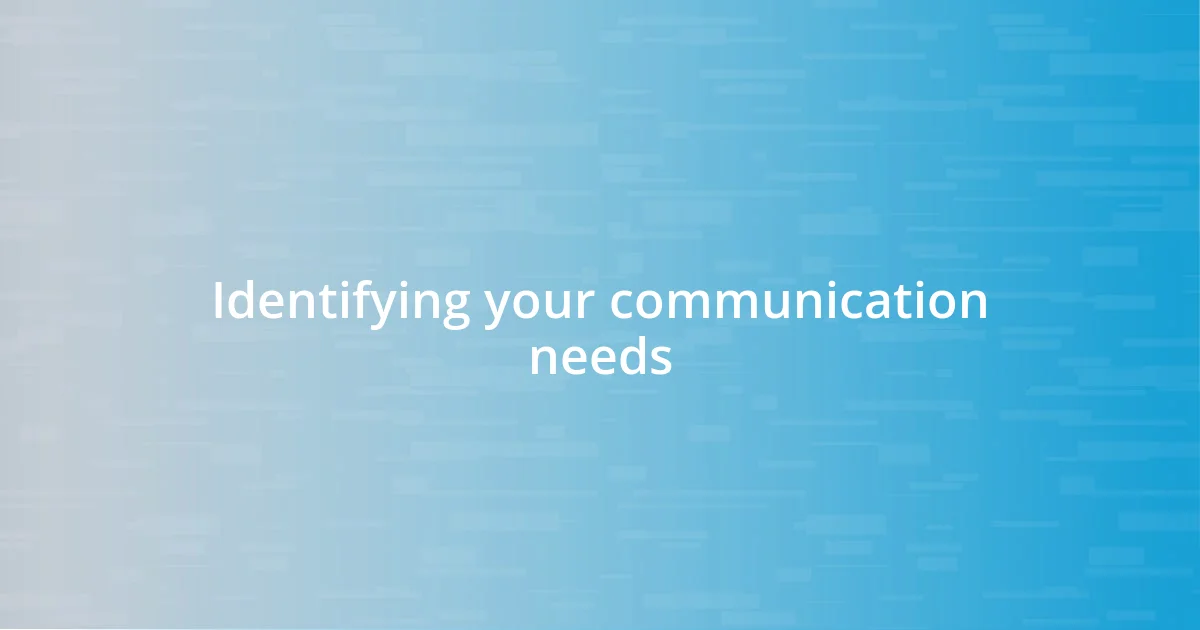
Identifying your communication needs
When I began navigating different cultures, I realized that simply knowing a few phrases wouldn’t suffice; I needed to assess my communication needs. One evening in Tokyo, I found myself at a local sushi bar, staring at a menu filled with unfamiliar characters. In that moment, I recognized that I needed more than just menu translations—I needed to effectively communicate my tastes and preferences. This experience taught me the importance of identifying what kind of interactions matter most to me.
Identifying your communication needs can be both enlightening and empowering. I remember attending an international conference where participants hailed from all over the globe. I quickly learned that I needed specific terminology related to my field, but I also wanted to convey my ideas passionately. Adapting my vocabulary while ensuring my enthusiasm shone through made the discussions more enriching, illustrating how addressing communication needs can enhance understanding.
Creating a checklist of your communication goals can be invaluable. Picture this: standing in a bustling marketplace in Istanbul, I felt a mix of excitement and anxiety. I had to express not just basic needs—like buying a pomegranate—but share my admiration for the vibrant culture. By preparing for both simple requests and deeper connections, I found joy in each interaction, realizing that clarity in communication fuels connection.
| Communication Need | Description |
|---|---|
| Basic Needs | Requesting items or services, like food or directions. |
| Emotional Expression | Conveying feelings or admiration to connect on a deeper level. |
| Professional Engagement | Using industry-specific language for effective collaboration. |
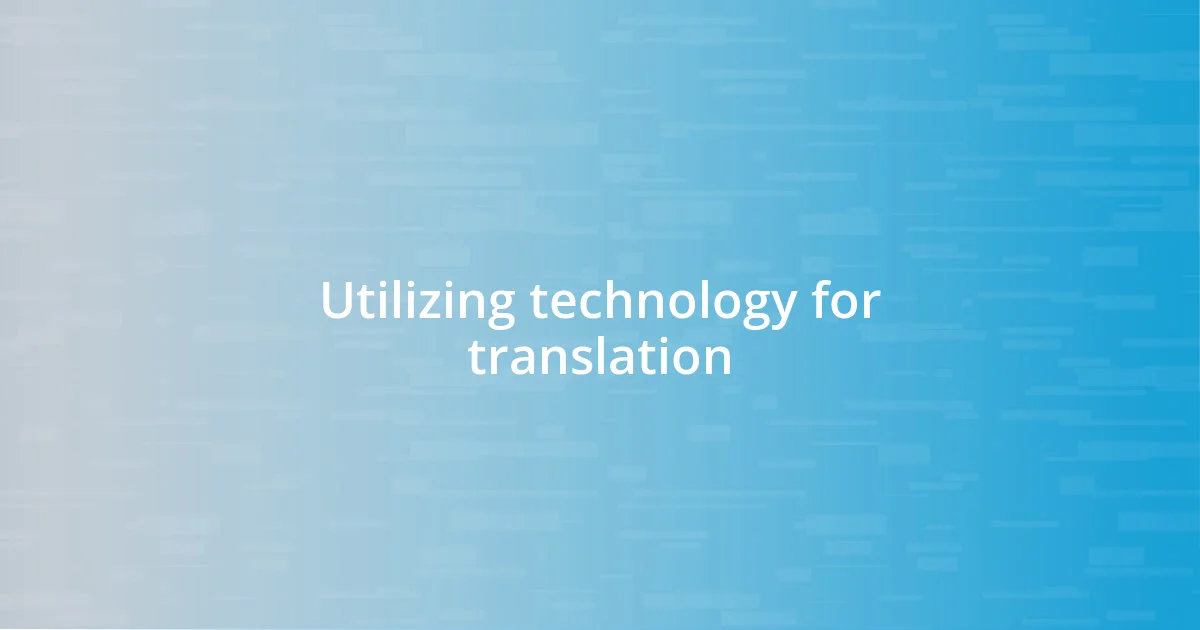
Utilizing technology for translation
Utilizing technology for translation has been a game-changer in breaking down language barriers. I recall a time in Barcelona when I tried to ask for directions. Armed with my smartphone, I quickly downloaded a translation app that not only converted my request from English to Spanish but also helped me pronounce the words correctly. That little device transformed what could have been a frustrating situation into a smooth conversation, leaving me feeling accomplished and connected.
In today’s digital world, there are several amazing tools that can aid in bridging the communication gap. These include:
- Translation Apps: They offer instant translations and voice recognition, making communication seamless.
- Online Dictionaries: Great for quick word lookups and understanding nuances.
- Video Chat Platforms: Some apps provide real-time translation during video calls, so you can connect with anyone, anywhere.
- Social Media Translation Features: These tools allow users to engage with content in different languages, fostering understanding and connection.
Each tool has its own strengths, and I find that by trying them out, I can enhance my interactions and truly immerse myself in diverse cultures. The key is to explore what resonates most with your personal communication style and needs. It’s incredible how technology can enable conversations that once seemed impossible.
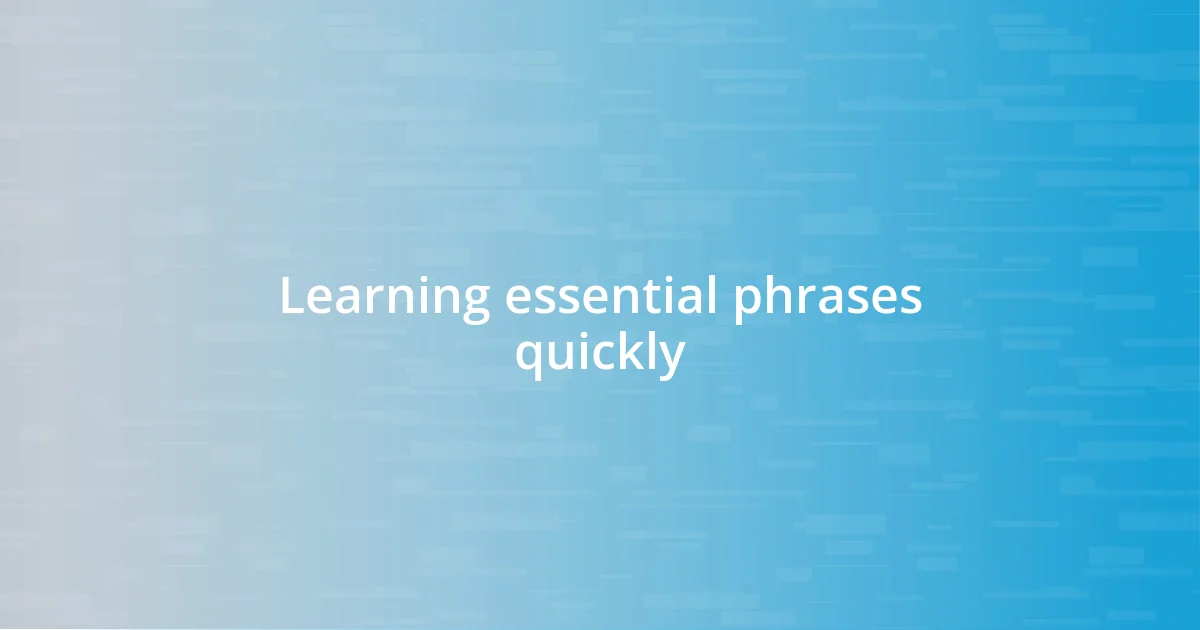
Learning essential phrases quickly
Learning essential phrases quickly can profoundly enhance your travel experiences. I often rely on mnemonic devices to memorize phrases that are crucial for day-to-day interactions. For example, while preparing for a trip to Paris, I linked the phrase “Où est la gare?” (Where is the train station?) with a mental image of searching for the train, making it easier to recall. Have you ever noticed how a simple image can spark our memory? It’s fascinating how our minds work.
When I traveled to Brazil, I realized that mastering a handful of phrases could open up doors to genuine connections. I focused on greetings, polite questions, and food-related vocabulary, which immediately made my conversations feel warmer and friendlier. I remember the sparkle in the eyes of a local when I successfully complimented their cuisine in Portuguese; it transformed a simple meal into a shared moment of joy. Don’t you think that even a small effort in learning can create ripples of goodwill?
Flashcards are another method I’ve found incredibly effective. On one occasion, I spent a weekend creating cards with essential phrases while listening to local music. Each phrase felt more alive when tied to the upbeat rhythms of the language; it was like dancing through the vocabulary! By integrating learning with something enjoyable, I discovered that I could absorb the language more naturally. Isn’t it interesting how combining different experiences can enhance our understanding?

Practicing active listening techniques
Practicing active listening techniques has been essential in overcoming communication hurdles. I vividly recall a business meeting in Tokyo where the language barrier loomed large. Instead of trying to respond immediately, I intentionally focused on nodding and maintaining eye contact while the speaker communicated in Japanese, even though I understood very little. This seemingly simple act of giving my full attention not only helped me catch some key points but also built rapport, as the speaker felt genuinely heard.
One effective technique I’ve adopted is paraphrasing to ensure clarity. For instance, during a language exchange with a friend from Germany, I would listen closely and then rephrase what I understood to confirm accuracy. “So, you’re saying that the public transportation system in Berlin is efficient, right?” This approach not only reinforced my comprehension but also encouraged her to engage more deeply in the conversation. Have you ever realized how summarizing someone’s words can make them feel valued and appreciated?
I also remember the moment when I encountered a traveler in India who spoke limited English. By using active listening, I tilted my head slightly and offered verbal affirmations, like “I see” or “Go on.” This created a cozy atmosphere, allowing the traveler to share their story about a lost bag with excitement and relief. I found that my patience in listening not only broke down the barrier but also enriched my understanding of their journey. Isn’t it fascinating how truly listening can turn a brief exchange into a memorable experience?
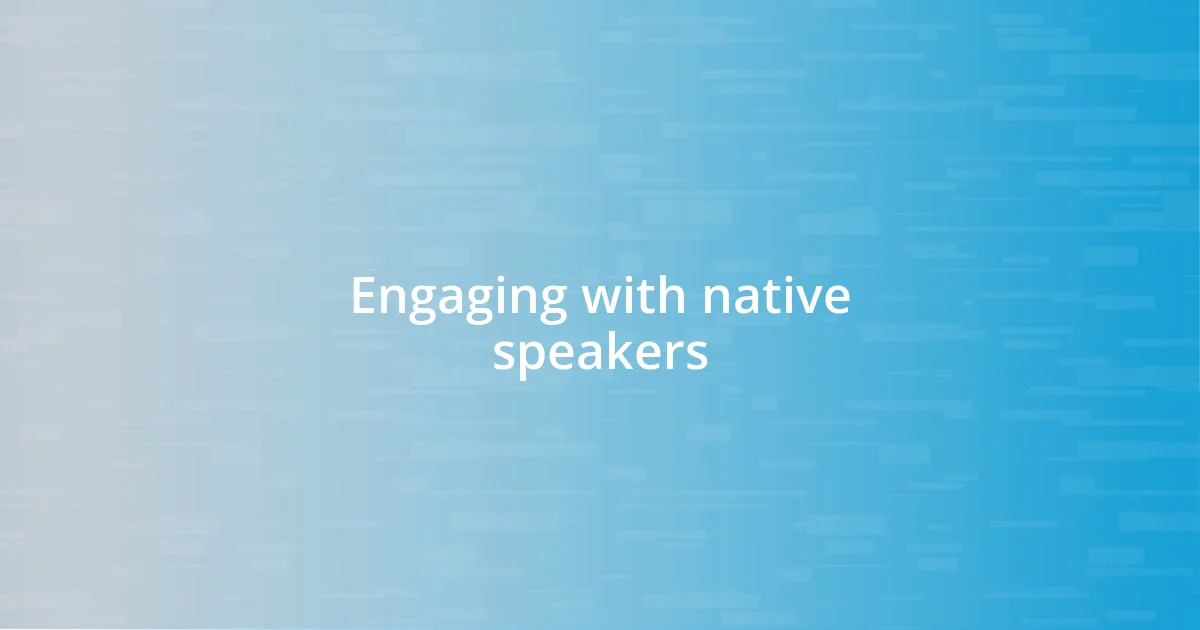
Engaging with native speakers
Engaging with native speakers is a delightful experience filled with opportunities for connection. I remember the first time I struck up a conversation with a local in Barcelona. I had just ordered tapas in a charming little café when the waiter noticed my tentative Spanish skills. With a warm smile, he encouraged me to try more phrases; it was like receiving a personal language coach in the moment. Have you ever felt that rush of excitement and confidence when someone genuinely appreciates your effort? It’s a bit like crossing a bridge to a whole new culture.
Another memorable moment occurred during a street festival in Thailand. While I was amazed by the vibrant atmosphere, I soon realized that engaging with locals could amplify my adventure. I decided to join a group of people painting traditional masks. Instead of shying away because of my limited Thai, I jumped in, mimicking their actions and asking simple questions. The laughter we shared as I struggled with the brush strokes created an instant bond. It’s incredible how shared activities can dissolve language barriers and create a sense of belonging, don’t you think?
I’ve also found that showing genuine curiosity helps bridge gaps in communication. One afternoon in Italy, while exploring a market, I approached an elderly vendor trying to sell handmade pasta. I pointed to the different shapes and excitedly asked about how to use them in dishes. Not only did this spark a lengthy conversation filled with gestures and smiles, but the vendor also offered me a taste of his favorite dish. I left not only with a recipe but also with a newfound friendship. Isn’t it amazing how a little curiosity can lead to such delightful surprises?
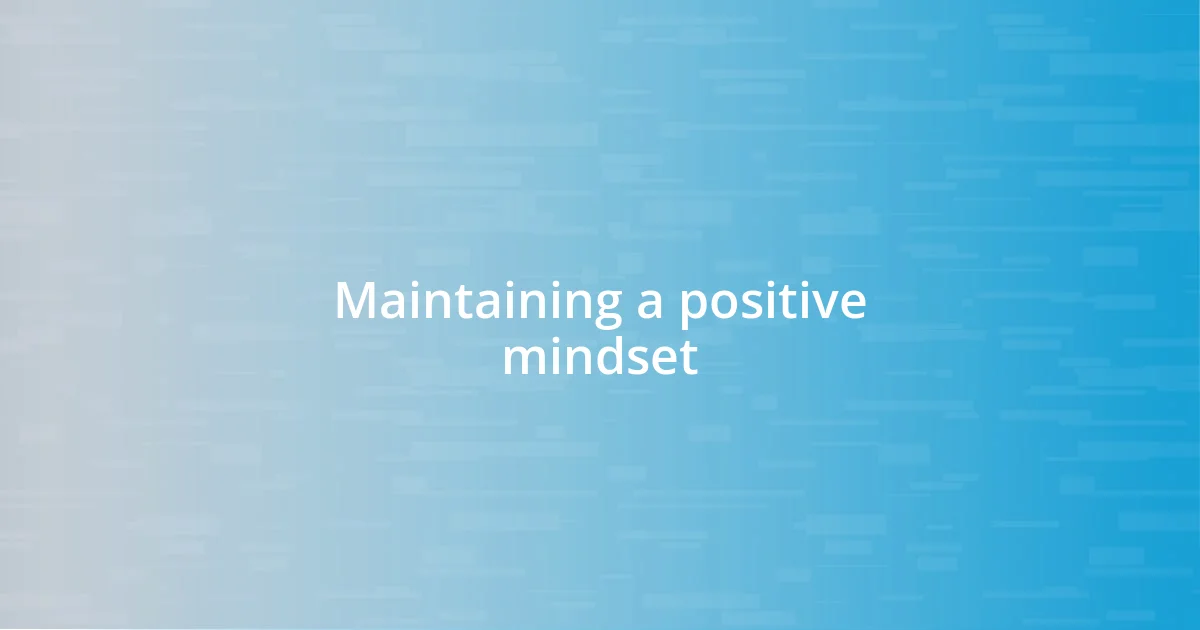
Maintaining a positive mindset
Maintaining a positive mindset can be your greatest asset when navigating language barriers. I remember my first trip to Brazil, where I struggled to communicate in Portuguese. Initially, I felt frustrated, but then I decided to approach every conversation with a sense of humor. Turning my mispronunciations into lighthearted moments helped me forge connections that went beyond words. Doesn’t it feel good to laugh off mistakes rather than dwell on them?
When I was in Germany, there was a moment when I realized that a positive attitude could create opportunities out of misunderstandings. While trying to inquire about directions, the local I spoke with switched to English, but my accent caused some confusion. Instead of becoming flustered, I laughed and mimicked cartoonishly exaggerated gestures, making both of us chuckle. In that instant, we transcended the language barrier and enjoyed a fun exchange. Have you ever found that a little creativity can transform an awkward situation into a delightful memory?
A positive mindset also fosters resilience. I once attended a cultural workshop in Japan, where language was the biggest hurdle. Rather than feeling intimidated, I embraced the challenge with an open heart. My willingness to absorb new phrases and stumble through conversations ignited a sense of camaraderie among participants. It’s incredible how facing challenges head-on, armed with optimism, can make the experience not only manageable but also immensely rewarding. Don’t you think that embracing the adventure makes every hurdle surmountable?

